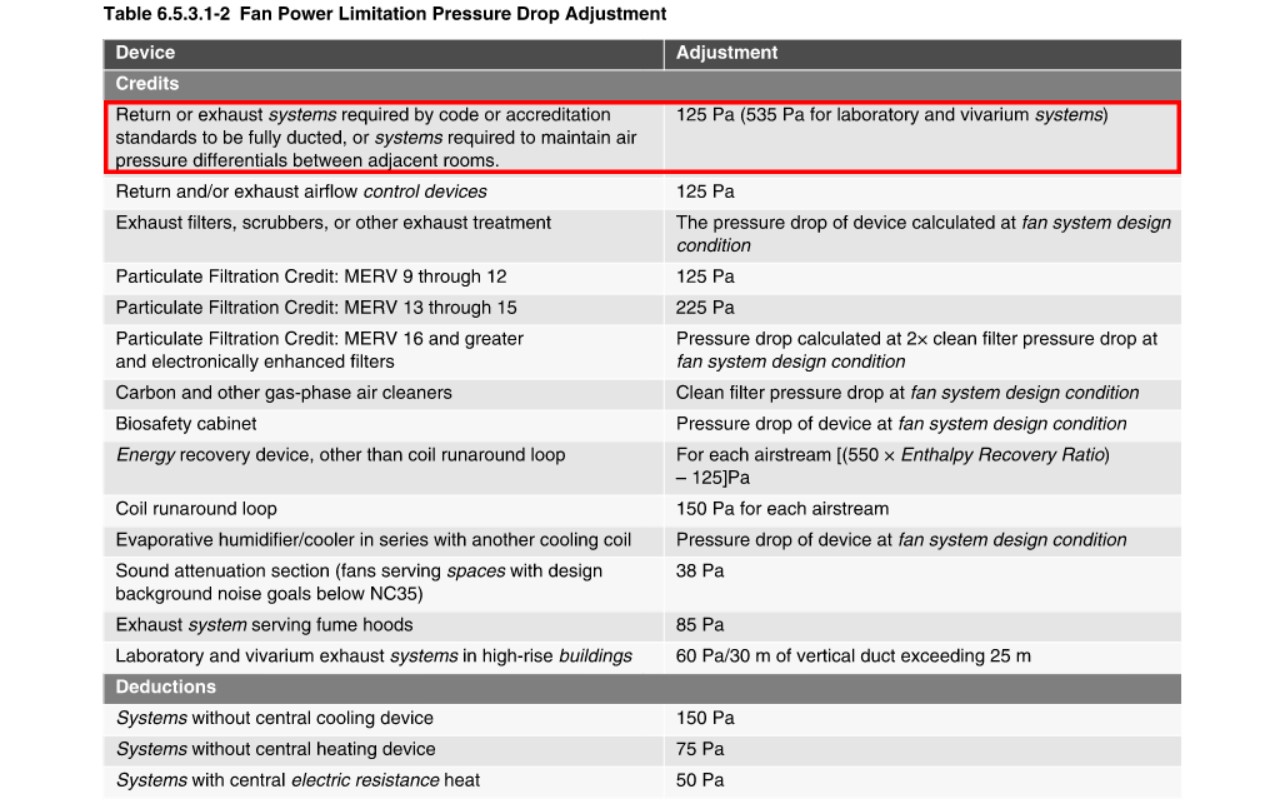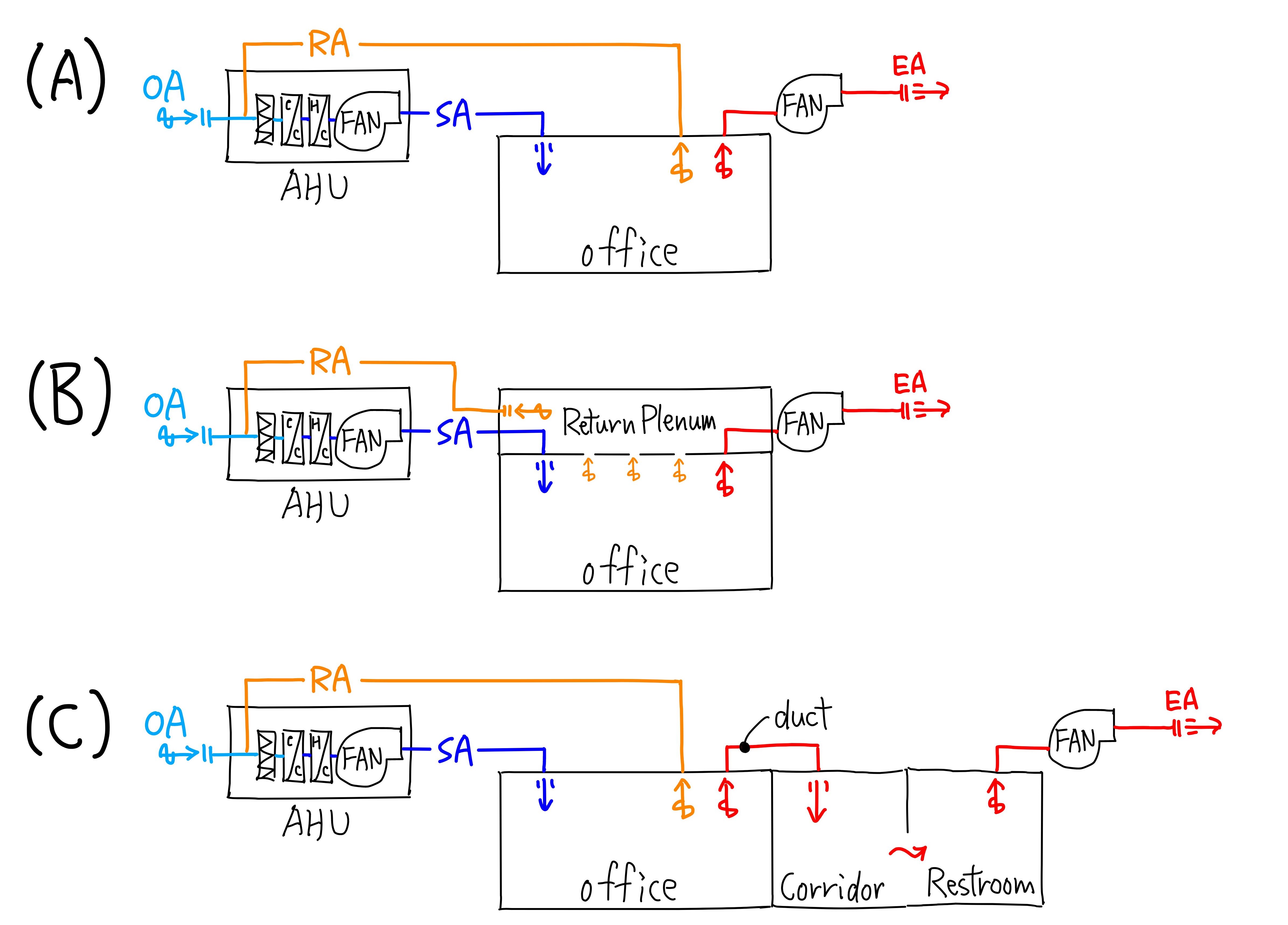Fan Power Limitation Pressure Drop Adjustment for "fully ducted" return or exhaust system in ASHRAE 90.1
I would like to know how to interpret "Return or exhaust systems required by code or accreditation standards to be fully ducted" when considering Fan Power Limitation Pressure Drop Adjustment in ASHRAE 90.1.

The Standard 90.1 User's Manual explains it as follows, but it is still not clear to me.

Can anyone advise if the pressure drop for fully ducted return or exhaust system (125Pa) should be considered for the following 3 fan systems (A) to (C)?
In my opinion, 125Pa should be added in baseline model when the fan system of proposed model is (A), and it should not be added when the proposed model is (B), but I'm not sure whether it should be added when the proposed model is (C).
(C) is a fan system in which the outdoor air supplied to rooms is finally exhausted from restrooms via corridors. I think it's a very common system.





